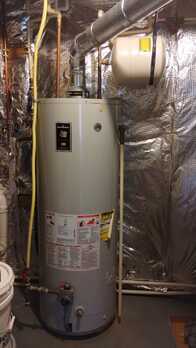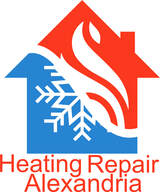|
Can you locate the water heater's shutoff button in the event of an emergency or significant leak? Unless you find yourself in a puddle, detect an unusual odour, or are preparing to replace your hot water heater, it is a straightforward undertaking that may not receive much thought. Every homeowner should be familiar with this vital safety feature, regardless of whether they have a gas or electric water heater, a tankless water heater, or a conventional heater, ahead of time. Please proceed with reading to discover the methods and timing for turning off the primary varieties of hot water heaters. How to Turn off Traditional Tank Gas or Electric Water HeatersTo prevent damage to your home or system, you can follow these steps to turn off a traditional electric or gas hot water heater that is leaking or malfunctioning: Both the gas shut-off valve on the water heater and the main gas supply in the home should be set to the OFF position. Turn off the power switch and circuit breaker associated with the water heater in the case of an electric model. Stop the valve lever by rotating the water supply to the unit in a clockwise direction. Turn off the primary water valve for your home as an additional precaution. (Here's how to locate your home's main water shut off valve!). Connect a standard garden hose to the drain tap located at the base of the water heater in order to prevent water damage to your residence. In a low location where it cannot be damaged by hot, rusty water, position the opposite end of the hose. Afterward, until water begins to flow from the hose, turn the drain tap counter-clockwise. Warning: this water could be extremely hot. Air can enter the tank while it is draining by pulling the pressure relief valve. Any hot water tap in your residence can produce the identical outcome. Prior to an extended period of absence, it is prudent to turn off the traditional tank water heater in your residence. This protects not only the inner coating of your hot water heater's tank but also a significant water leak in the event of a tank malfunction. After eight to twelve years, or longer, with proper maintenance, conventional gas and electric water heaters do not require replacement or repair. A good way to extend the life of your system is to turn off the unit whenever the main water supply is interrupted, including when you will be away. How to Turn off an Electric Tankless Water HeaterA tankless water heater, alternatively known as an on-demand water heater, provides an inexhaustible supply of instantaneous hot water, in contrast to conventional tank water heaters. Tankless electric water heaters provide on-demand heating of cold water using internal heating elements, as opposed to storing the heated water in a sizable tank, which consumes a significant amount of energy. Here’s how to turn off your tankless electric water heater: Discover the breaker switch that regulates the water heater within the breaker box. Adjust its position to OFF. Stop the flow of water to the main residence. Situated in close proximity to or atop the water heater, locate the water supply valve. Achieve the OFF position by rotating the valve handle. How to Turn off a Gas Tankless Water HeaterGas tankless water heaters require a slightly different sequence of actions to operate in comparison to their electric counterparts, which can be easily accomplished by utilizing the circuit breaker in one's home. Defeat the circuit breaker that provides power to the unit's control panel. The gas supply valve that enters the unit must be turned off. Use the valve located near the gas meter to deactivate the main gas supply to your home for added safety. Stop the flow of water to the main residence. Situated in close proximity to or atop the water heater, locate the water supply valve. Achieve the OFF position by rotating the valve handle. When Should you Shut off your Water Heater?It is evident that promptly deactivating a water or gas leak in your water heater is of the utmost importance. But under what circumstances should you disable your system? We advise homeowners to disengage their water heaters for the following reasons, which occur most frequently: A gas-powered system emits an odour of gas or produces a hissing sound. Should a water heater repair be imminent, In advance of installing a new water heater For extended periods of time when you will be away from home Should you experience a prolonged interruption in your water supply, Additional Recommendation: In the case of a more recent on-demand water heater or tank system, the thermostat may feature a "LOW" or "VAC" setting. You will conserve a substantial amount of gas or electricity by reducing the temperature of your water heater to 50 to 70°. This convenience setting, in conjunction with the following plumbing advice, can assist you in conserving energy while safeguarding your residence during your prolonged absence from town. Time for a Water Heater Repair? Just Call Heating Repair Alexandria!It may be necessary to perform a system tune-up or replace your hot water heater if it is not heating as efficiently as it once did. Our knowledgeable residential plumbers at Burton can assist you in locating the most cost-effective and suitable on-demand hot water tank or heater system for your residence, family, and financial situation. Call Burton immediately to arrange service or to obtain a quote!
0 Comments
|
AuthorWrite something about yourself. No need to be fancy, just an overview. Archives
May 2024
Categories |
Local Service AreasHours of OperationMonday - 24 Hours
Tuesday - 24 Hours Wednesday - 24 Hours Thursday - 24 Hours Friday - 24 Hours Saturday - 24 Hours Sunday - 24 Hours |
|
Contact us |
Terms of use | Privacy Policy | Sitemap


 RSS Feed
RSS Feed
